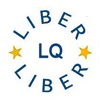nestor Guideline for Preservation Planning – a Process Model
DOI:
https://doi.org/10.18352/lq.9166Keywords:
digital preservation, preservation planning, significant properties, LTP-policies, workflow optimisationAbstract
The nestor guideline for preservation planning is the latest in a series of nestor publications. nestor is the German competence network for digital preservation and it offers all interested parties from the private and public domains the possibility to participate in working groups. The guideline for preservation planning is the result of such a working group, which discussed the conceptual and practical issues of implementing the OAIS Functional Entity “Preservation Planning”.
The guideline describes a process model and offers some guidance on potential implementations. It integrates and builds on recognized community concepts like Significant Properties, the OAIS Designated Community, the National Archives of Australia’s Performance Model, the PREMIS concept of Intellectual Entities and Representations, and the PLANET’s approach to preservation planning. Furthermore, it introduces the concepts “intended use” (Nutzungsziele), “information type” (Informationstyp) and “preservation group” (Erhaltungsgruppe). The purpose of these new categories is that information objects shall be grouped by information type (e.g., audio, video, text…) and intended use (e.g., reading for pleasure, search for specific information…) to preservation groups for automatic processing. Significant properties can then be derived for whole preservation groups. The file format alone is considered as not completely sufficient for such categorisation. Some exemplary implementation solutions of the new concepts are presented in an annex.
The guideline takes into account that resources for preservation planning and preservation actions are limited and has therefore adopted 4 premises: adequacy, financial viability, automation, and authenticity of archived objects. Its pragmatic approach becomes apparent in the definition and explanation of these dimensions. The guideline is written from the point of view of representatives of memory institutions, i.e., libraries, archives, museums, and is primarily targeted at this context although it may be useful for other information preserving institutions too.
This contribution introduces the nestor guideline for preservation planning (for now only available in German; English translation envisaged for 1st half of 2014) to an international audience for the first time. It also matches the process model and the new concepts intended use, information type and preservation group to the collection and preservation reality of the German National Library.
Downloads

Published
Issue
Section
License
Copyright (c) 2014 Sabine Schrimpf, Christian Keitel

This work is licensed under a Creative Commons Attribution 4.0 International License.





